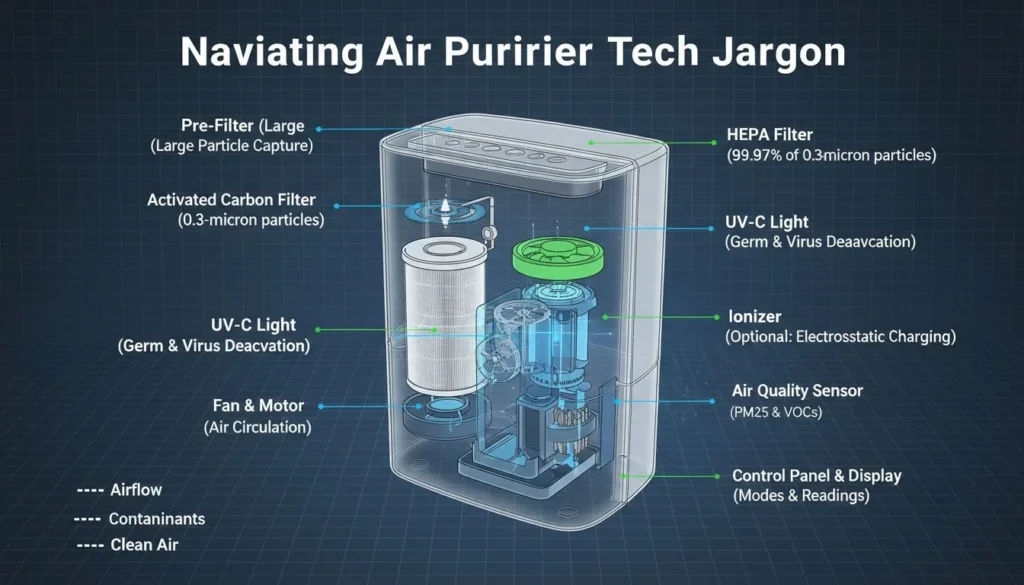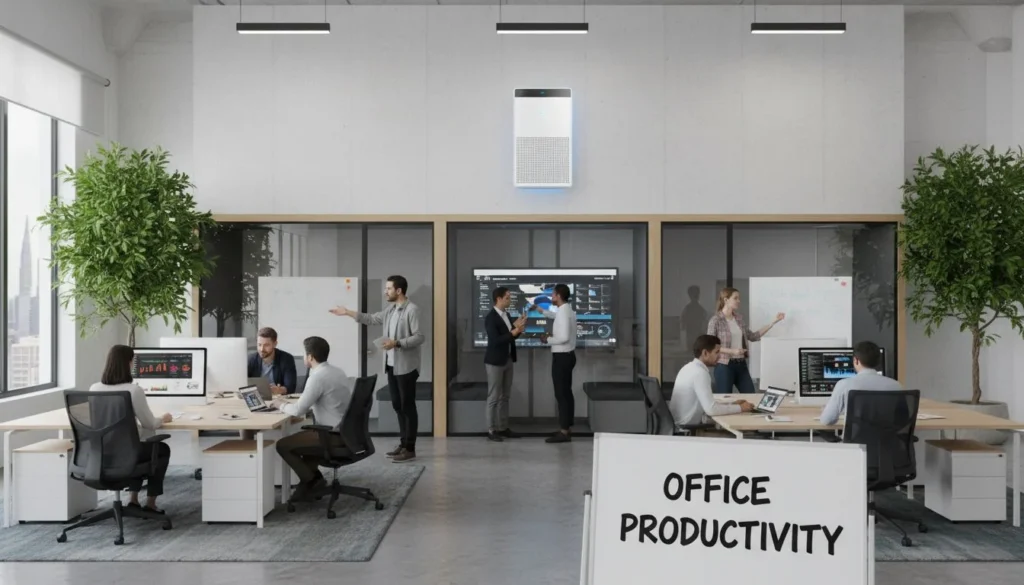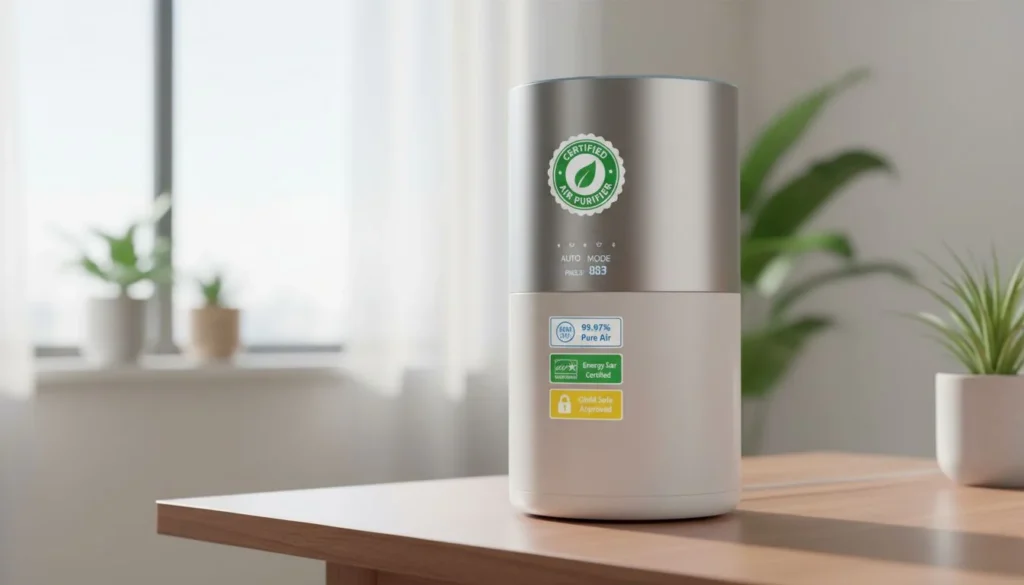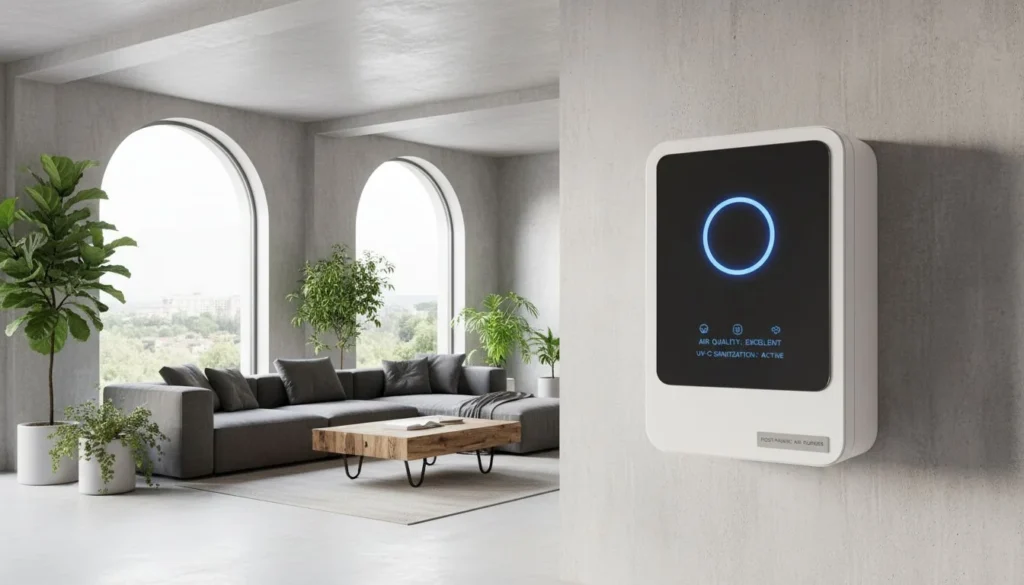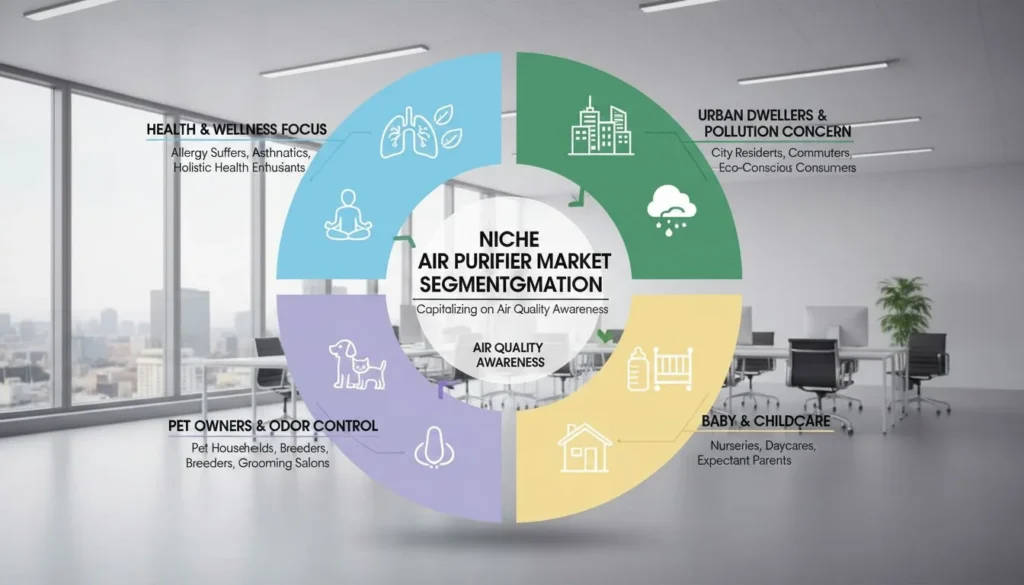
코로나19 팬데믹이 시작되면서 공기청정기가 주목받기 시작했고, 틈새 제품에서 가정 필수품으로 변모했습니다.
코로나19 팬데믹으로 인해 공기 중 바이러스로부터 실내 공기질을 보호하려는 소비자들의 수요가 급증하면서 공기청정기 수요가 급증했습니다. 이로 인해 많은 신규 브랜드가 시장에 진입하면서 경쟁이 치열해졌지만, 일부는 팬데믹 이후 어려움을 겪기도 했습니다.
즉각적인 수요 급증은 진정되었지만, 팬데믹이 공기질에 대한 소비자 인식에 미친 영향은 여전히 상당합니다. 이 블로그에서는 시장 역학관계가 어떻게 변화했으며 공기청정기의 미래는 어떻게 될지 살펴봅니다.
코로나19로 인해 건강에 대한 우려로 공기청정기 수요가 증가했습니다.True
팬데믹으로 인해 실내 공기질에 대한 인식이 높아지면서 매출이 증가했습니다.
코로나19 기간 동안 공기청정기 수요가 급증한 요인은 무엇일까요?
코로나19가 전 세계적으로 확산되면서 소비자 우선순위의 변화를 반영하듯 공기청정기는 전례 없는 수요를 보였습니다.
코로나19 팬데믹 기간 동안 건강에 대한 우려가 커지고 실내에서 보내는 시간이 늘어나면서 공기청정기에 대한 수요가 크게 증가했습니다. 소비자들이 실내 공기질에 대한 인식이 높아지면서 사람들이 공기 중 바이러스 전파 위험을 줄이려고 노력함에 따라 판매량이 급증했습니다.
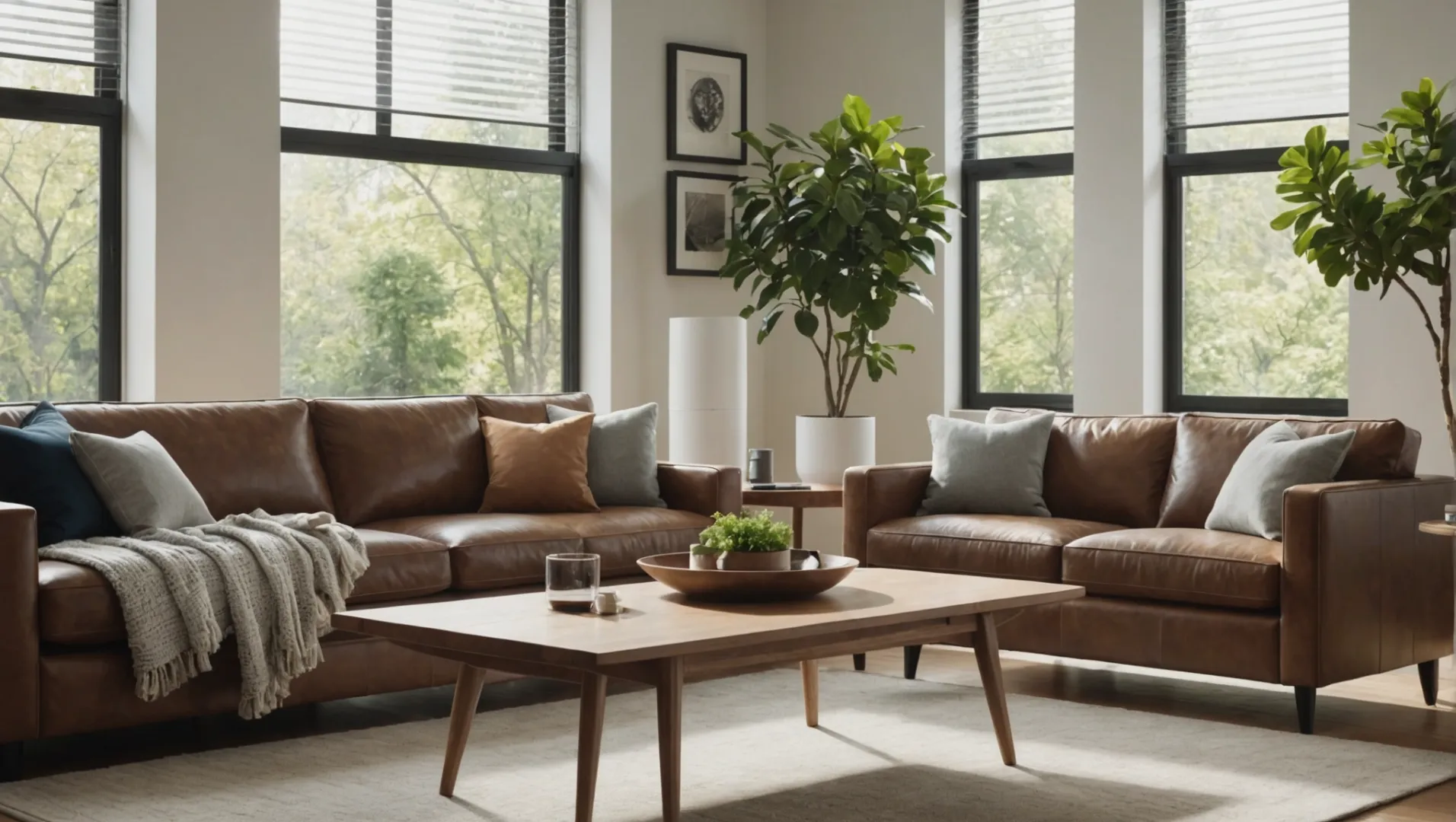
건강 문제 및 바이러스 보호 강화
코로나19 팬데믹이 시작되면서 사람들은 공기 중 바이러스의 위험성에 대해 심각하게 인식하게 되었습니다. 그 결과 이러한 병원균에 대한 노출을 잠재적으로 줄일 수 있는 제품에 대한 수요가 눈에 띄게 증가했습니다. 공기 중 입자를 걸러낼 수 있는 공기청정기는 바이러스 전파를 예방하는 수단으로 빠르게 인기를 얻었습니다. 특히 인구 밀도가 높고 건물의 환기가 원활하지 않은 도시 지역에서 그 수요가 두드러지게 나타났습니다.
가정 환경 개선의 증가
팬데믹으로 인해 많은 사람들이 봉쇄령과 원격 근무로 인해 실내에서 더 많은 시간을 보내야 했습니다. 이러한 변화는 가정 환경 개선에 대한 관심으로 이어졌습니다. 소비자들은 공기청정기와 같이 실내 공기질을 개선할 수 있는 제품에 투자하기 시작했습니다. 또한 재택 활동이 증가하면서 요리와 청소로 인한 실내 오염 물질이 증가하여 공기청정기가 매력적인 옵션이 되었습니다.
시장 경쟁 및 브랜드 확산
수요 급증으로 인해 많은 신규 업체가 시장에 진입하면서 경쟁이 치열해졌습니다. 다양한 신규 브랜드가 저마다 독특한 장점이나 첨단 기술을 내세우며 공기청정기를 출시했습니다. 이러한 치열한 경쟁은 혁신을 촉진했지만 시장 포화로 이어지기도 했습니다. 일부 브랜드는 우수한 제품이나 효과적인 마케팅 전략으로 성공을 거둔 반면, 팬데믹 이후 시장 점유율을 유지하는 데 어려움을 겪은 브랜드도 있었습니다.
| 핵심 요소 | 수요에 미치는 영향 |
|---|---|
| 건강 문제 | 인식 제고 및 예방 조치 |
| 실내 공기질 | 장시간 실내 체류로 인한 가정 내 환경 개선 |
| 시장 경쟁 | 브랜드 확산과 혁신 |
향후 시사점 및 새로운 트렌드
당장의 공포가 가라앉아도 실내 공기질에 대한 인식은 여전히 높습니다. 이러한 인식은 특히 소비자들이 바이러스뿐만 아니라 연기, 냄새, 휘발성 유기 화합물(VOC)을 제거할 수 있는 솔루션을 계속 찾고 있기 때문에 웰빙 및 건강 분야의 수요가 지속될 것으로 보입니다. 시간당 최소 공기 변화량 설정과 같은 공기질 기준을 규제하기 위한 정부의 향후 입법화 가능성(ACH) 요구 사항은 시장 역학 관계에 더 큰 영향을 미칠 수 있습니다.
팬데믹 이후 소비자 습관이 어떻게 바뀌었는지, 그리고 이것이 공기청정기 시장에 어떤 의미가 있는지 자세히 알아보려면 다음을 살펴볼 수 있습니다. 소비자 인식의 진화1 그리고 방법 정부 정책에 영향을 미칠 수 있는2 미래 수요를 예측합니다.
공기청정기는 공기 중 바이러스 전파 위험을 줄여줍니다.True
공기청정기는 입자를 필터링하여 바이러스 노출을 잠재적으로 낮춥니다.
코로나19 기간 동안 공기청정기에 대한 수요가 감소했습니다.False
건강에 대한 관심이 높아지고 실내에서 보내는 시간이 많아지면서 수요가 증가했습니다.
새로운 시장 진입자는 경쟁 구도를 어떻게 변화시켰나요?
코로나19 팬데믹으로 공기청정기 시장에 새로운 브랜드가 쏟아져 나오면서 경쟁 구도가 크게 바뀌었습니다.
코로나19 팬데믹 기간 동안 새로운 시장 진입으로 공기청정기 업계의 경쟁이 치열해지면서 가격 인하와 혁신이 이뤄졌지만, 팬데믹 이후 일부 기업이 파산하는 결과를 낳기도 했습니다.
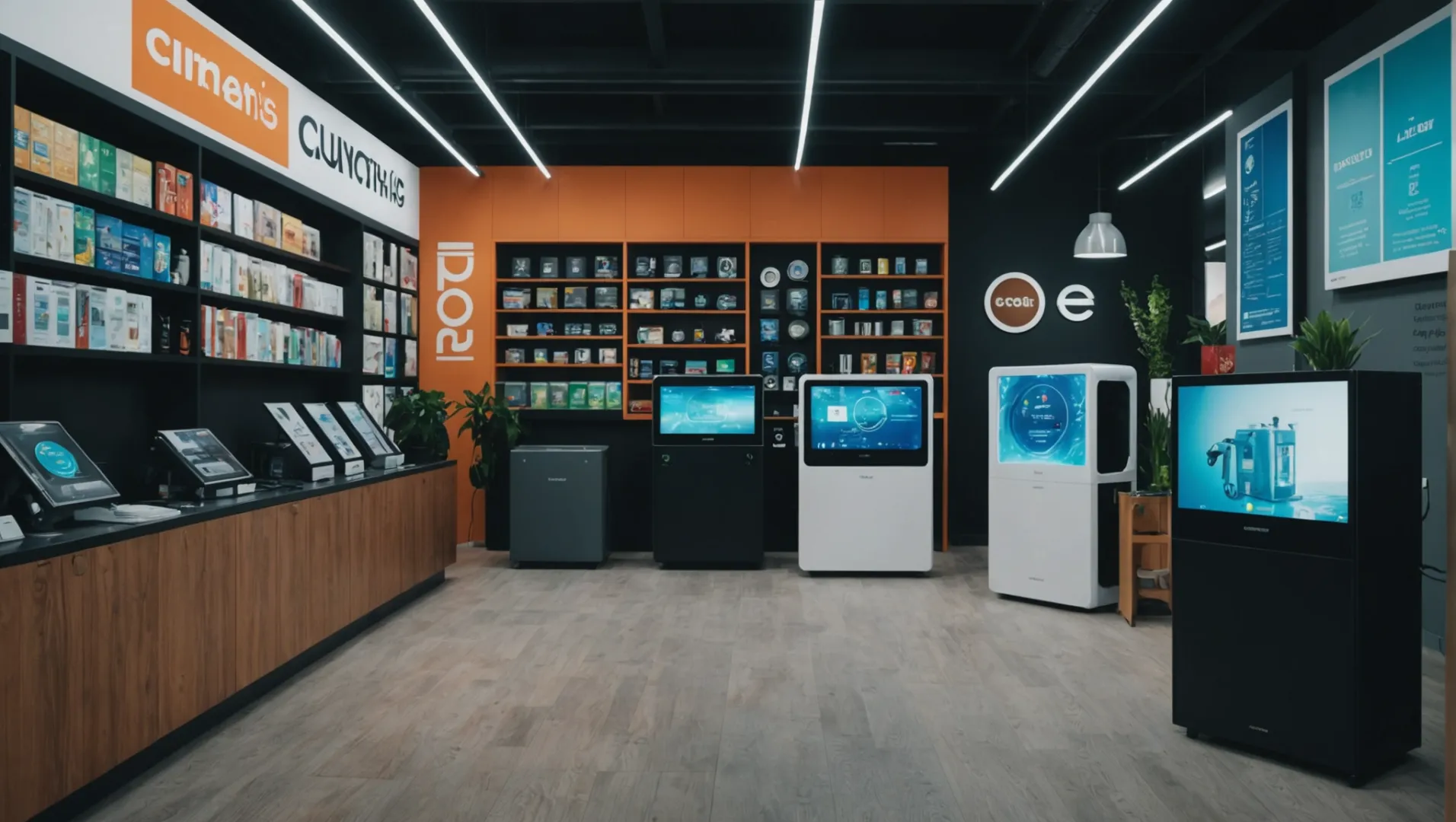
팬데믹이 시장 진입에 미치는 영향
코로나19 팬데믹 기간 동안 실내 공기질에 대한 사람들의 인식이 높아지면서 공기청정기 시장은 전례 없는 성장을 경험했습니다. 수요가 급증하면서 많은 신규 기업이 시장에 진입했습니다. 이러한 신규 진입자의 유입은 다음과 같은 결과로 이어졌습니다. 경쟁이 치열한 환경3 시장의 역학 관계를 크게 변화시켰습니다.
경쟁과 혁신의 부상
수많은 브랜드가 소비자의 관심을 끌기 위해 경쟁하면서 경쟁이 치열해졌습니다. 이는 가격을 낮출 뿐만 아니라 혁신을 촉진했습니다. 기업들은 여과 기능 향상, 더 조용한 작동, 스마트 기술 통합 등 제품 기능을 강화해야 했습니다.
가격, 기술, 소비자 평가 등 주요 요소를 종합적으로 비교한 결과, 경쟁이 어떻게 발전을 촉진했는지 알 수 있었습니다:
| 요인 | 팬데믹 이전 | 팬데믹 기간 중 | 팬데믹 이후 |
|---|---|---|---|
| 평균 가격 | 높음 | Lower | 안정화 |
| 혁신 속도 | 보통 | 높음 | 지속적 |
| 브랜드 가시성 | 소수의 리더 | 많은 신규 브랜드 | 일부 통합 |
팬데믹 이후의 과제와 시장 통합
초기 호황에도 불구하고 모든 신규 진입자가 팬데믹 이후에도 사업을 지속할 수 있었던 것은 아닙니다. 수요가 정상화되면서 강력한 재정적 지원이나 혁신적인 제품이 없는 기업은 시장 점유율을 유지하는 데 어려움을 겪었습니다. 그 결과 몇 가지 파산 및 퇴사4 시장에서
그러나 이 시기는 기존 브랜드가 소규모 업체를 인수하거나 합병하는 통합의 길을 열기도 했습니다. 이러한 통합은 시장을 안정시키고 공기청정기 산업이 계속 발전함에 따라 장기적인 성장의 발판을 마련하는 데 도움이 되었습니다.
소비자 인식의 역할
공기질에 대한 인식이 높아지면서 팬데믹 이후에도 상대적으로 높은 수요가 지속되고 있습니다. 이제 소비자들은 공기청정기에 단순한 바이러스 제거 이상의 기능을 기대합니다. 냄새 및 연기 제거와 같은 기능은 다음과 같습니다. VOC (휘발성 유기 화합물) 여과에 대한 수요가 점점 증가하고 있습니다.
웰빙과 건강에 대한 지속적인 강조는 공기청정기에 대한 지속적인 관심을 보장할 것으로 보이며, 특히 다음과 같은 특징이 있습니다. 예상되는 법률5 미국과 같이 대기질 기준을 강화하는 지역에서는 더 엄격한 기준을 적용하고 있습니다.
코로나19 기간 동안 새로운 브랜드들이 공기청정기 가격을 인하했습니다.True
경쟁이 치열해지면서 업체들이 소비자를 유치하기 위해 경쟁하면서 가격이 낮아졌습니다.
팬데믹 이후 모든 신생 공기청정기 회사가 번창했습니다.False
팬데믹 이후 많은 신규 참가자들이 어려움을 겪었고, 파산과 퇴사로 이어졌습니다.
정부 입법은 향후 수요에 어떤 역할을 할까요?
특히 새로운 규제가 곧 시행될 예정인 상황에서 정부 입법은 향후 공기청정기 수요를 형성하는 데 중요한 요소가 될 수 있습니다.
시간당 6번의 공기 교체를 의무화하는 미국의 예상되는 규정과 같은 정부 입법(ACH) 밀폐된 공간에서 공기청정기에 대한 수요가 크게 증가할 것으로 예상됩니다. 이러한 규제 조치는 더 나은 실내 공기질을 보장하여 소비자 행동과 시장 역학 관계에 영향을 미치는 것을 목표로 합니다.
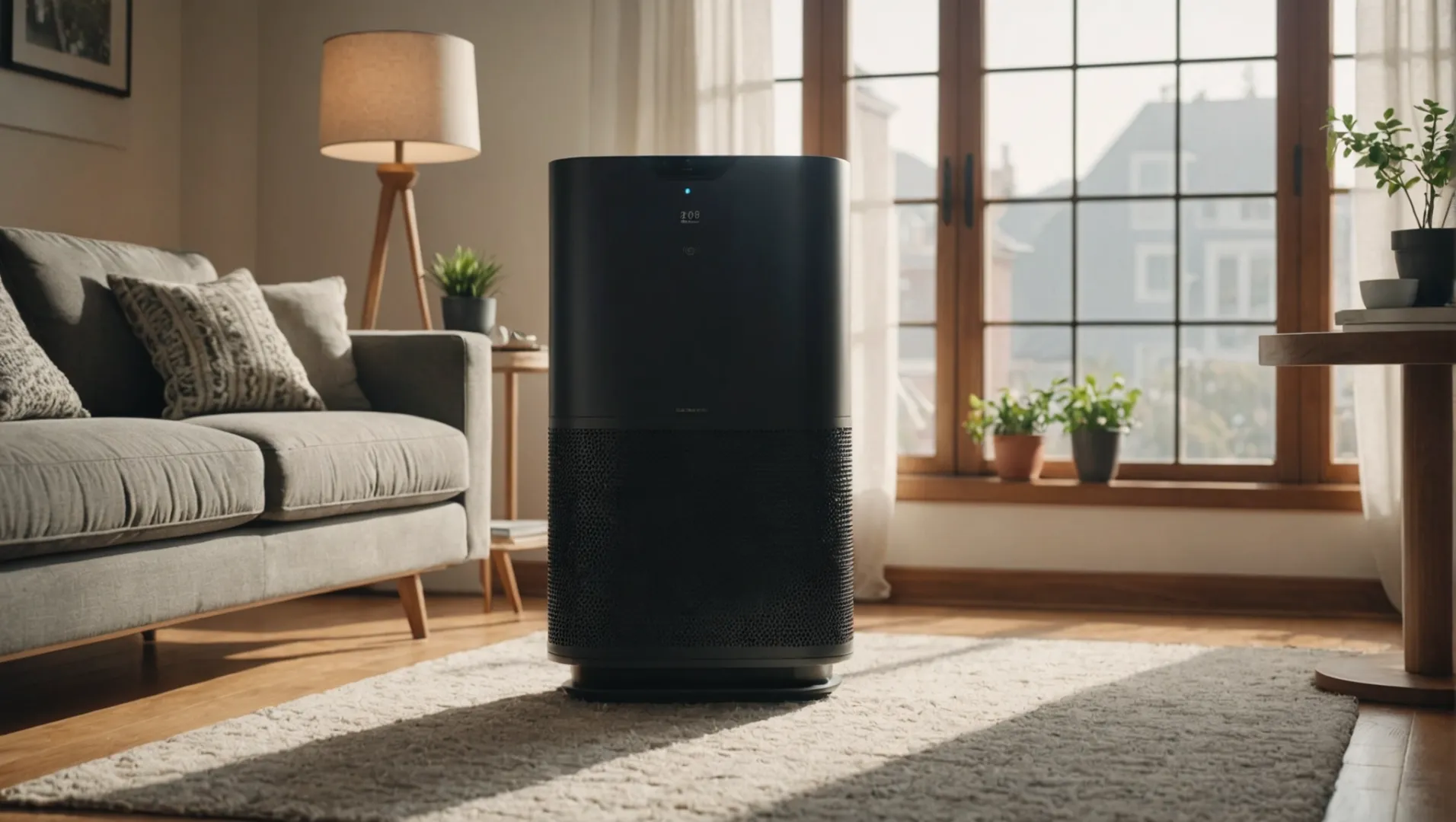
대기질 규제의 영향 이해
공기청정기에 대한 향후 수요에서 정부 입법의 역할은 과소평가할 수 없습니다. 대표적인 예로 시간당 6번의 공기 교체를 의무화하는 미국 규정이 곧 시행될 예정입니다(ACH)를 밀폐된 공간에서 사용할 수 없습니다. 이 규정은 코로나19 팬데믹으로 인해 높아진 경각심에 따라 실내 공기질 기준을 강화하기 위한 광범위한 이니셔티브의 일환입니다.
그리고 시간당 공기 변화 (ACH)6 지표는 주어진 공간 내에서 공기가 얼마나 자주 교체되는지를 측정합니다. 정부는 최소 기준을 시행함으로써 공기 중 오염 물질을 줄여 건강 결과를 개선하는 것을 목표로 합니다. 이 규정은 이러한 새로운 기준을 충족할 수 있는 더 효율적이고 고용량 공기청정기에 대한 수요를 촉진할 것으로 예상됩니다.
시장에 미치는 파급 효과
이러한 규정이 시행됨에 따라 상업 및 주거 부문 모두에 변화가 있을 것으로 보입니다. 기업, 학교, 의료 시설에서는 이러한 표준을 준수해야 하므로 규정을 준수하는 공기청정기를 대량으로 구매하게 될 가능성이 높습니다. 또한 제조업체들이 새로운 효율성 기준을 충족하기 위해 노력함에 따라 공기 정화 기술의 혁신으로 이어질 수도 있습니다.
광범위한 글로벌 영향
미국의 법안이 선례가 될 수 있지만, 다른 국가에서도 유사한 기준을 채택하여 이를 따를 가능성이 높습니다. 대기질 문제에 대한 전 세계적인 인식이 높아짐에 따라 국제 시장에서 이러한 엄격한 기준을 충족하는 제품에 대한 수요가 증가할 수 있습니다. 이는 이러한 규제 요건에 빠르게 적응하는 제조업체에게 새로운 수출 기회를 열어줄 수 있습니다.
잠재적 과제 및 고려 사항
그러나 잠재적인 문제도 있습니다. 규정 준수 비용은 예산이 제한된 소규모 기업이나 조직에 부담이 될 수 있습니다. 또한 소비자와 기업 모두가 이러한 표준 준수의 중요성과 이점을 이해할 수 있도록 공공 교육 캠페인이 필요할 수 있습니다.
결론적으로, 정부 법안은 처음에는 부담스러워 보일 수 있지만, 공기청정기 시장의 혁신과 성장을 촉진하는 촉매제 역할을 할 수 있습니다. 전 세계적으로 더욱 엄격한 공기질 기준을 향해 나아가고 있는 지금, 소비자와 업계 이해관계자 모두 정보를 파악하고 적응하는 것이 중요할 것입니다.
미국 규정은 밀폐된 공간에서 6개의 ACH를 의무화합니다.True
예상되는 미국 규정은 시간당 6번의 공기 교환을 요구합니다.
규정 준수 비용은 소규모 비즈니스에는 영향을 미치지 않습니다.False
소규모 비즈니스는 새로운 표준을 충족하는 데 드는 비용으로 어려움을 겪을 수 있습니다.
팬데믹 이후 대기 질에 대한 소비자 인식은 어떻게 변화했나요?
코로나19 팬데믹으로 인해 대기 질에 대한 전 세계의 인식이 높아지면서 대기 질이 주요 대중의 관심사로 떠올랐습니다.
팬데믹 이후 공기질에 대한 소비자 인식이 크게 높아졌습니다. 이제 사람들은 공기청정기가 바이러스 제거뿐만 아니라 냄새, 연기, 미세먼지, VOC와 같은 오염 물질을 제거하는 데에도 중요하다는 것을 인식하고 있습니다.
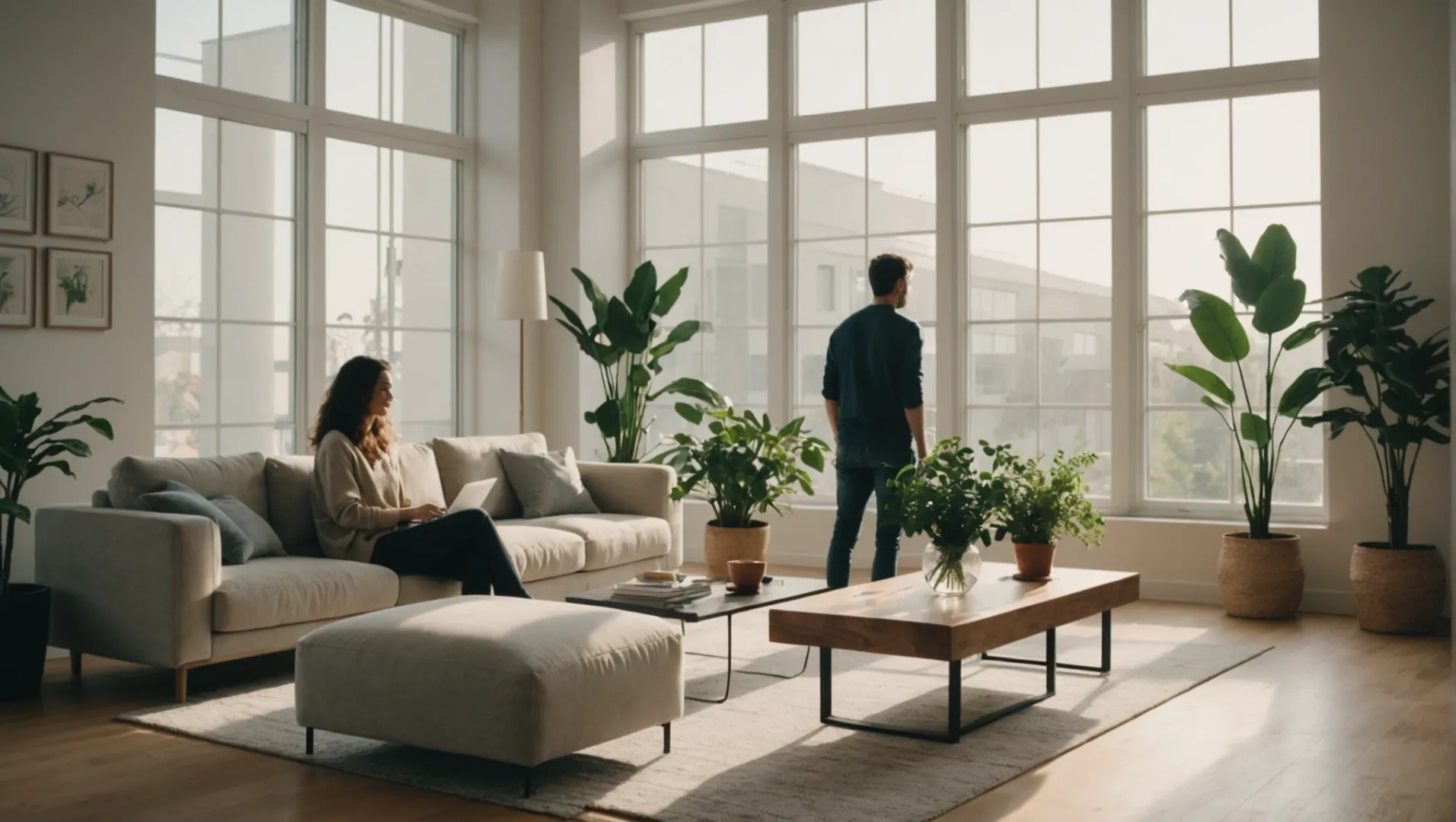
인식의 전환
팬데믹 이전에는 많은 사람에게 공기질은 뒷전으로 밀려났을지도 모릅니다. 하지만 봉쇄 조치로 인해 건강한 실내 환경의 중요성이 강조되면서 사람들은 집에서 호흡하는 공기를 고려하기 시작했습니다. 이 인지도 향상7 는 팬데믹이 절정에 달한 이후에도 지속되고 있습니다.
미디어 및 정보의 영향
팬데믹 기간 동안 언론의 보도 증가는 대중에게 공기질에 대해 알리는 데 중요한 역할을 했습니다. 공기 순환 불량과 공기 중 병원균의 잠재적 위험성을 강조하는 보도는 소비자 행동에 영향을 미쳤습니다. 오늘날 개인은 깨끗한 공기를 유지하기 위한 정보를 적극적으로 찾고 있으며, 고품질 공기청정기에 대한 수요가 더욱 증가하고 있습니다.
바이러스를 넘어선 우려의 확대
처음에는 바이러스 차단이 주를 이루었지만, 소비자의 우려는 다른 공기질 요인으로까지 확대되었습니다. 사람들은 이제 다음과 같은 위험 요소를 인식하고 있습니다. 입자상 물질8, 휘발성 유기 화합물(VOCs) 및 기타 오염 물질. 이러한 변화는 실내 공기 관리에 대한 보다 포괄적인 접근 방식으로 이어지고 있습니다.
| 오염 물질 유형 | 공통 소스 | 건강에 미치는 영향 |
|---|---|---|
| 입자상 물질(PM) | 연기, 먼지, 꽃가루 | 호흡기 문제, 심장 질환 |
| VOC | 페인트, 청소 제품 | 두통, 간 손상 |
| 냄새 | 요리, 반려동물 | 불편함, 메스꺼움 |
법률의 역할
향후 정부 규제는 이러한 추세를 더욱 강화할 것으로 예상됩니다. 미국에서는 시간당 6번의 공기 교환을 의무화하는 법안이 곧 시행될 예정입니다(ACH)는 공기청정기를 가정과 사무실의 필수품으로 만들 수 있습니다. 이는 공기 질이 공중 보건에 미치는 영향에 대한 정책적 차원의 인식이 높아지고 있음을 반영합니다.
전 세계적인 현상
이러한 인식의 증가는 한 지역에 국한된 것이 아니라 여러 대륙에 걸쳐 나타나고 있습니다. 국제적인 미디어가 인사이트와 연구를 공유하면서 전 세계 소비자들은 실내 공기질에 대한 더 나은 솔루션을 요구하고 있습니다. 이러한 세계적인 추세는 일상 생활에서 공기질을 인식하고 우선순위를 정하는 방식이 영구적으로 변화할 것임을 시사합니다.
팬데믹 이후 대기질에 대한 인식이 높아졌습니다.True
팬데믹으로 인해 대기 질에 대한 우려가 부각되면서 경각심이 높아졌습니다.
법적으로 가정에서는 시간당 6번의 공기 교환이 의무화되어 있습니다.False
이러한 법안이 논의되고 있지만 미국에서는 아직 의무화되지 않았습니다.
결론
팬데믹은 공기질에 대한 인식을 영구적으로 바꾸어 공기청정기 시장의 미래 성장을 위한 토대를 마련했습니다. 법률 변화와 진화하는 소비자 니즈에 대한 최신 정보를 파악하여 새로운 기회를 활용하세요.
-
팬데믹 이후 소비자 습관이 어떻게 변화했는지 알아보세요. 예를 들어, 코로나19 팬데믹 기간 동안 환경 의식이 크게 증가했으며, 이는 소비자들이 다음과 같은 노력을 기울이는 데서 나타났습니다. ↩
-
향후 공기청정기 수요에 영향을 미칠 수 있는 잠재적 규제에 대해 알아보세요: 청정 대기법(CAA)에 따라 EPA는 미국 전역의 공기 중 허용되는 양을 제한하는 등 특정 대기 오염 물질에 대한 제한을 설정합니다. ↩
-
경쟁 심화가 제품 제공 및 가격에 어떤 영향을 미치는지 이해합니다: 대기 오염 수준이 증가함에 따라 시장이 주도되고 있습니다. 또한, 기술 혁신과 포트폴리오 확장은 제품으로 이어지는 ... ↩
-
일부 기업이 대유행 이후 운영을 지속 할 수없는 이유 살펴보기 : 2021 년에서 2023 년 사이에 4 개의 공기 정화 회사를 인수 한 Applied UV Inc.는 금요일 파산 보호를 신청하면서 $1 백만 달러를 인용했습니다 ... ↩
-
향후 공기청정기 수요에 영향을 미칠 수 있는 잠재적 규제에 대해 알아보세요: 국가 대기질 기준의 효율적인 국가 이행을 촉진하고 기타 목적을 위한 법안. ↩
-
실내 공기질 규정 준수에 중요한 ACH 지표에 대해 알아보십시오: 시간당 공기 변화량(약칭 ACPH 또는 ACH) 또는 공기 변화율은 실내 또는 공간의 총 공기량이 완전히 제거된 횟수이며, ... ↩
-
코로나19로 인해 대기 질에 대한 우려가 어떻게 높아졌는지에 대한 자세한 인사이트를 살펴보세요: 특히, 코로나19 팬데믹의 영향은 지속 가능한 소비 유창성에 더 큰 영향을 미쳤으며, 그다음으로 환경적 ... ↩
-
미세먼지의 위험성과 건강에 미치는 영향에 대해 알아보세요 ..: 건강 영향 - 심장 또는 폐 질환 환자의 조기 사망 - 치명적이지 않은 심장 마비 - 불규칙한 심장 박동 - 천식 악화 - 감소 ... ↩


